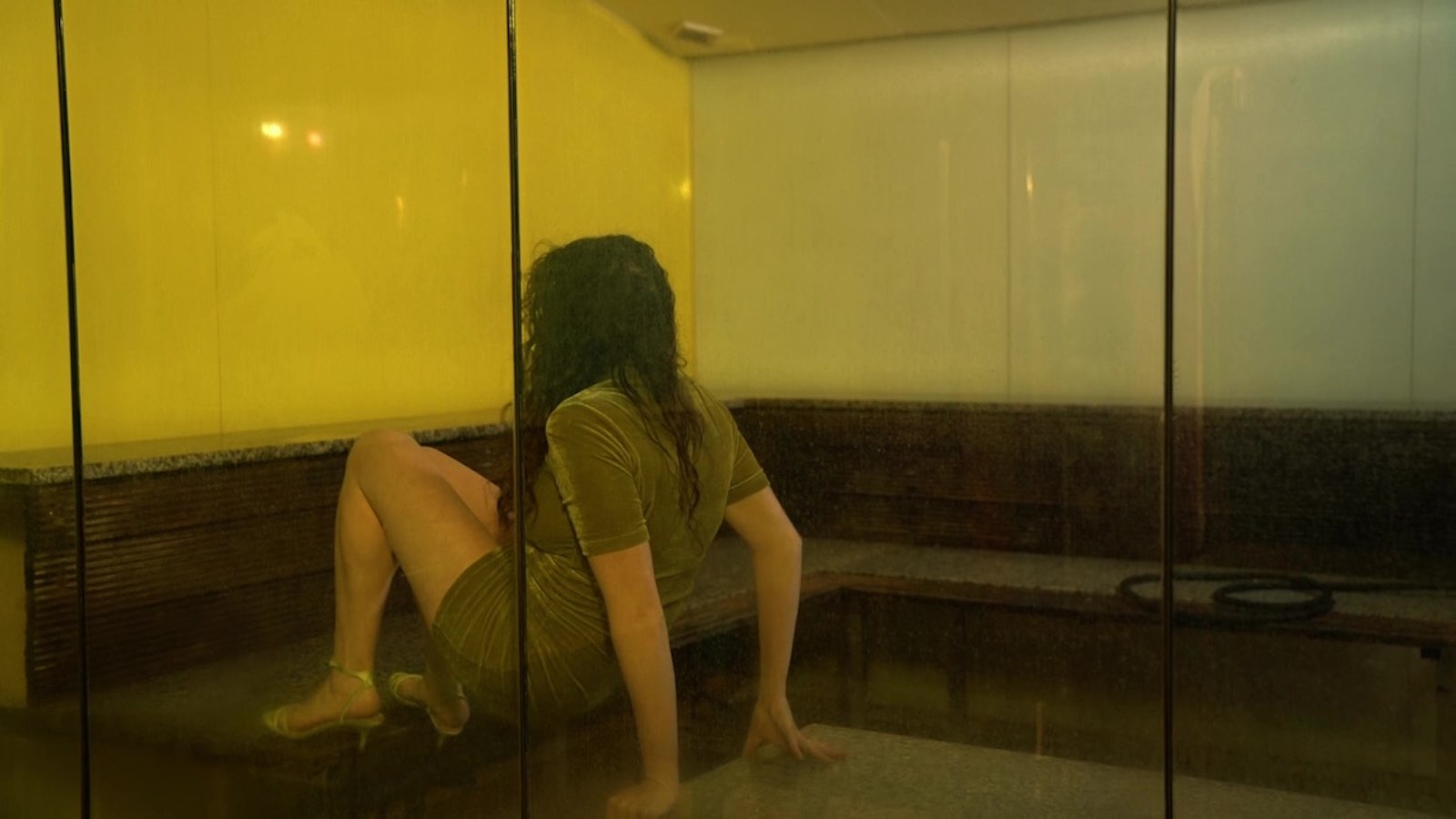How do you describe your own art practice?
Process and conversation-based. My practice is very passive, I essentially follow gestures, wonders and words, and see where they take me. It’s maybe due to this approach that I often work hand-made and love to include others in the making, so that my tendencies can be easily disrupted.
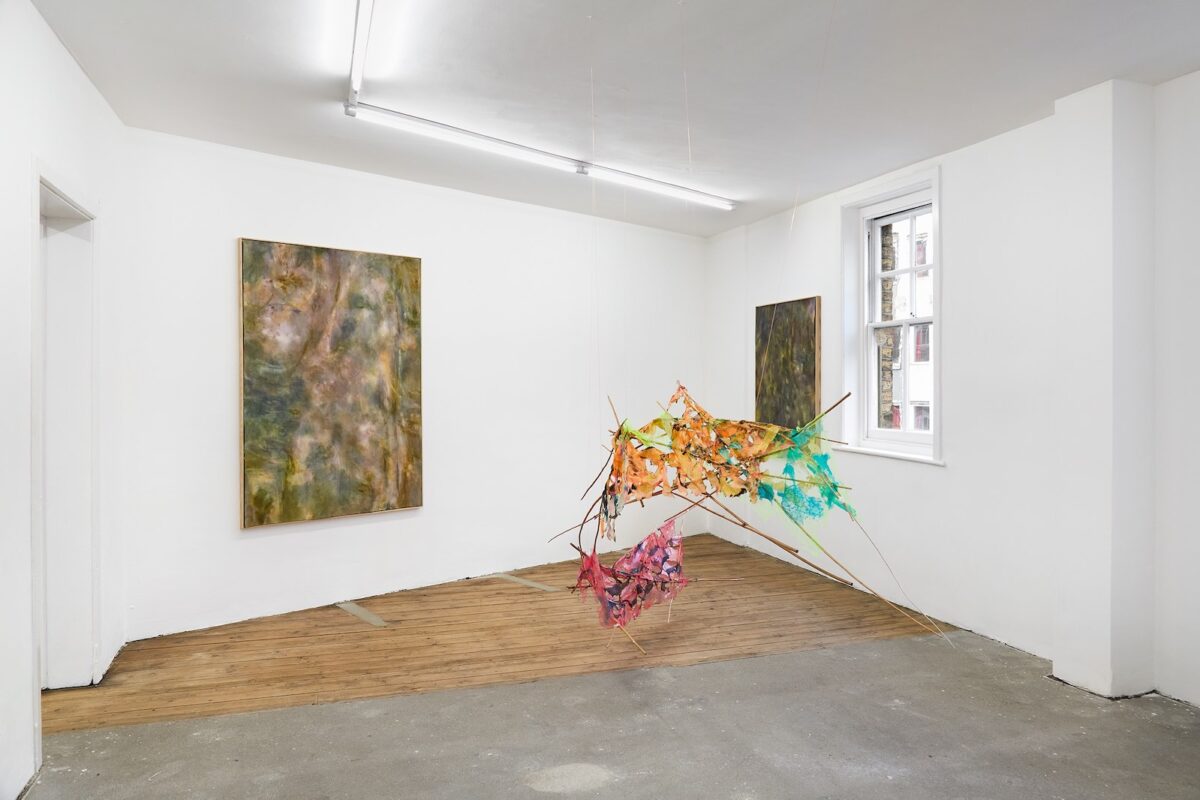
2023
Wood, wire, fish line, and vegan bioplastic dyed with turmeric, charcoal, chia seeds, paprika, food colourants and paint on natural silk and mesh.
30 x 70 x 230 cm
40 x 80 x 280 cm
Installation views at South Parade, London
Which question or theme is central to your work?
I like to think of each show as the first one, trying to get rid of previous ideas and preferred ways of working. Even though some questions do reappear and have me hooked, I would not want to choose a topic on top of another. I work until whatever it is I’m making (an installation, a piece of writing, a drawing, an encounter, a present for a friend…) feels strange; as if it had been made by someone else. Then, when I’m able to be surprised, amazed and/or terrified by the product, it’s time to share it.
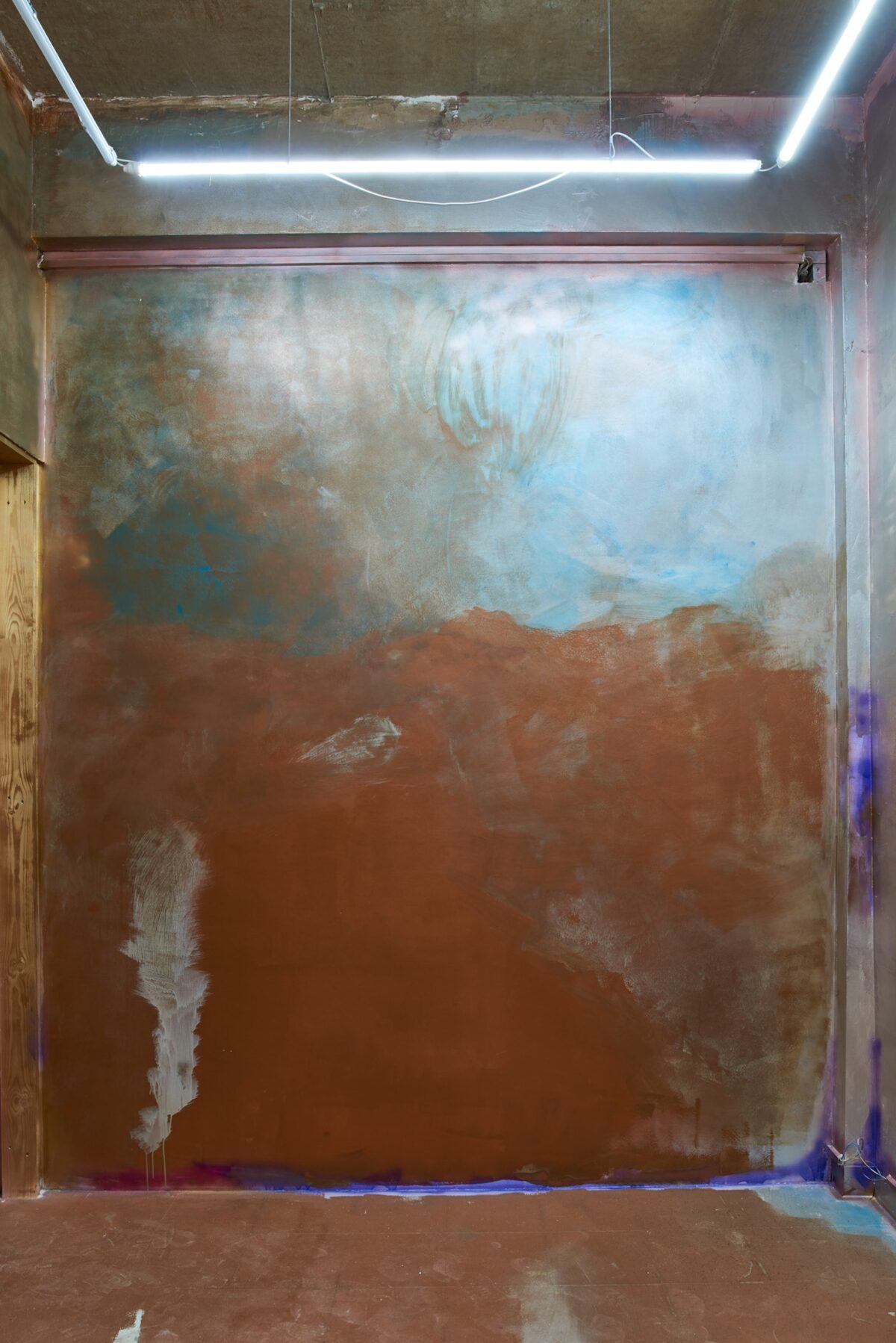
2020
Spray and wall paint on walls.
Intersticio, London
Site-specific installation curated by Cristina Herráiz Peleteiro.
What was your first experience with art?
I remember an exhibition with of drawings by Joan Miró, installed in a small public hall in my hometown. I could hardly reach the vitrines because I was too small and stupefied. Miró still is one of my favourite artists.
But speaking of early aesthetic experiences, I sometimes think that all those long hours I spent in big churches during mass, when I was a kid, have most likely shaped my sensibility and ways of looking around. I remember being so deeply bored and disconnected from the ritual, that my eyes would desperately look for stimuli and invent stories with whatever was in sight: vandalised altarpieces, dusty gold, lacquered hairstyles, shivering shadows, fragmented sentences, smells and guitar worship songs. All this collapsed in my hallucinated infantile brain and I would often lose track of time. It was like playing in silence, and I now think of art experiences as spaces a bit like that, where reality gets dismantled.
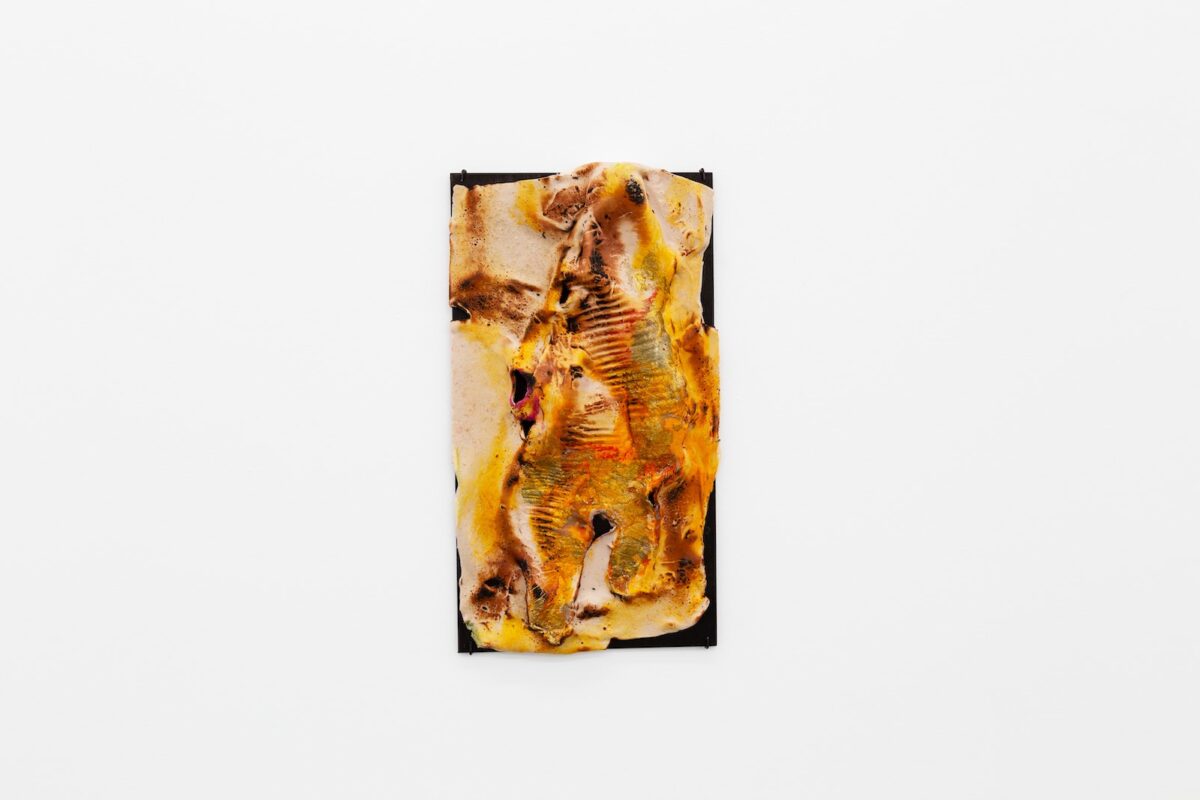
2022
Wood, walnut stain, clay, acrylic paint, pastel, metal flakes.
48 x 30 cm
What is your greatest source of inspiration?
Others, any relationship. Not only the people that I admire and have lovely conversations with, but also those who annoy, upset and infuriate me. I´m oddly grateful for the unpleasant encounters and distasteful confrontations, as they really put me to work.
I believe it is not said enough, how much of the creative thrive arises from boiling blood.
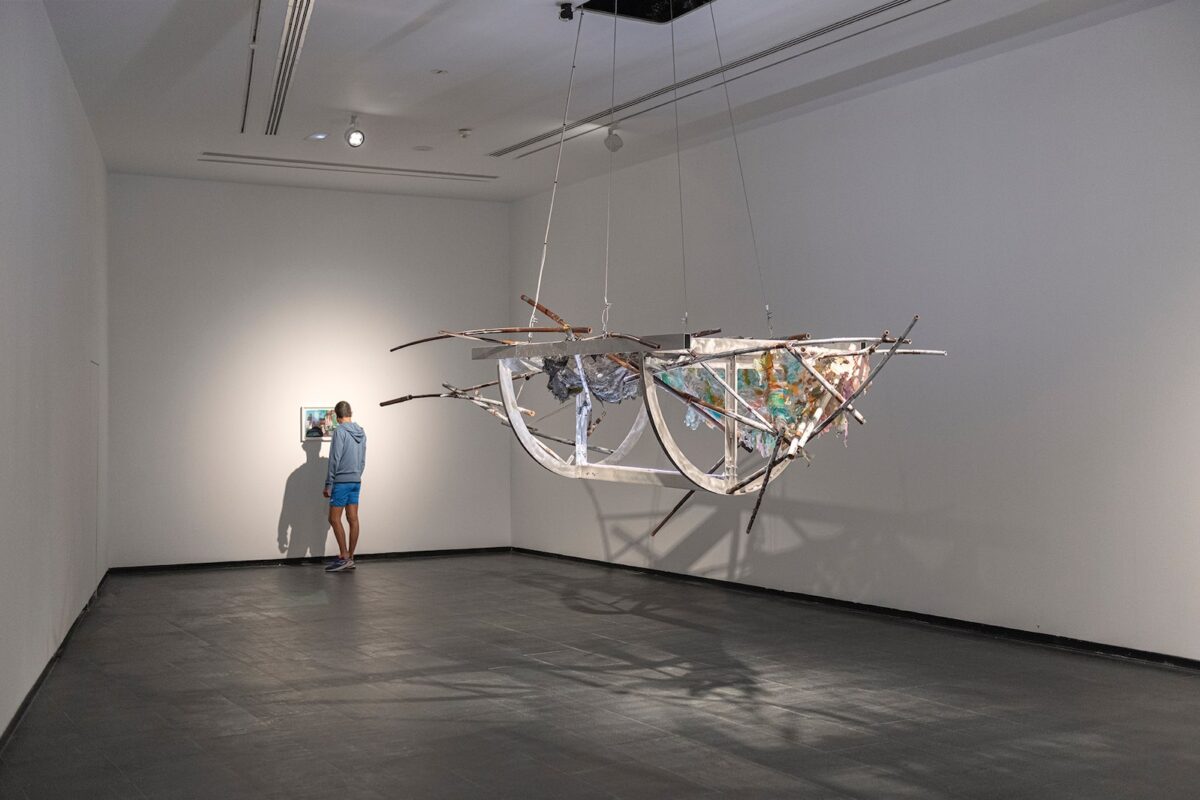
2023
Motorised sculpture: bamboo canes, aluminium structures, programmed engines, enamel paint, glitter, stickers, rubber toys and vegan bioplastic.
5 x 2 x 2 metres.
CA2M Museum, Madrid
Solo show curated by Cory John Scozzari.
What do you need in order to create your work?
Someone to talk to and something to write on; those are the essentials. I now also have a studio, with some materials and tools, which helps me invent a routine and a sense of fake stability, so I use it and love being there. I like to keep my studio almost empty and well-organised, with no previous works on view. I need this void.
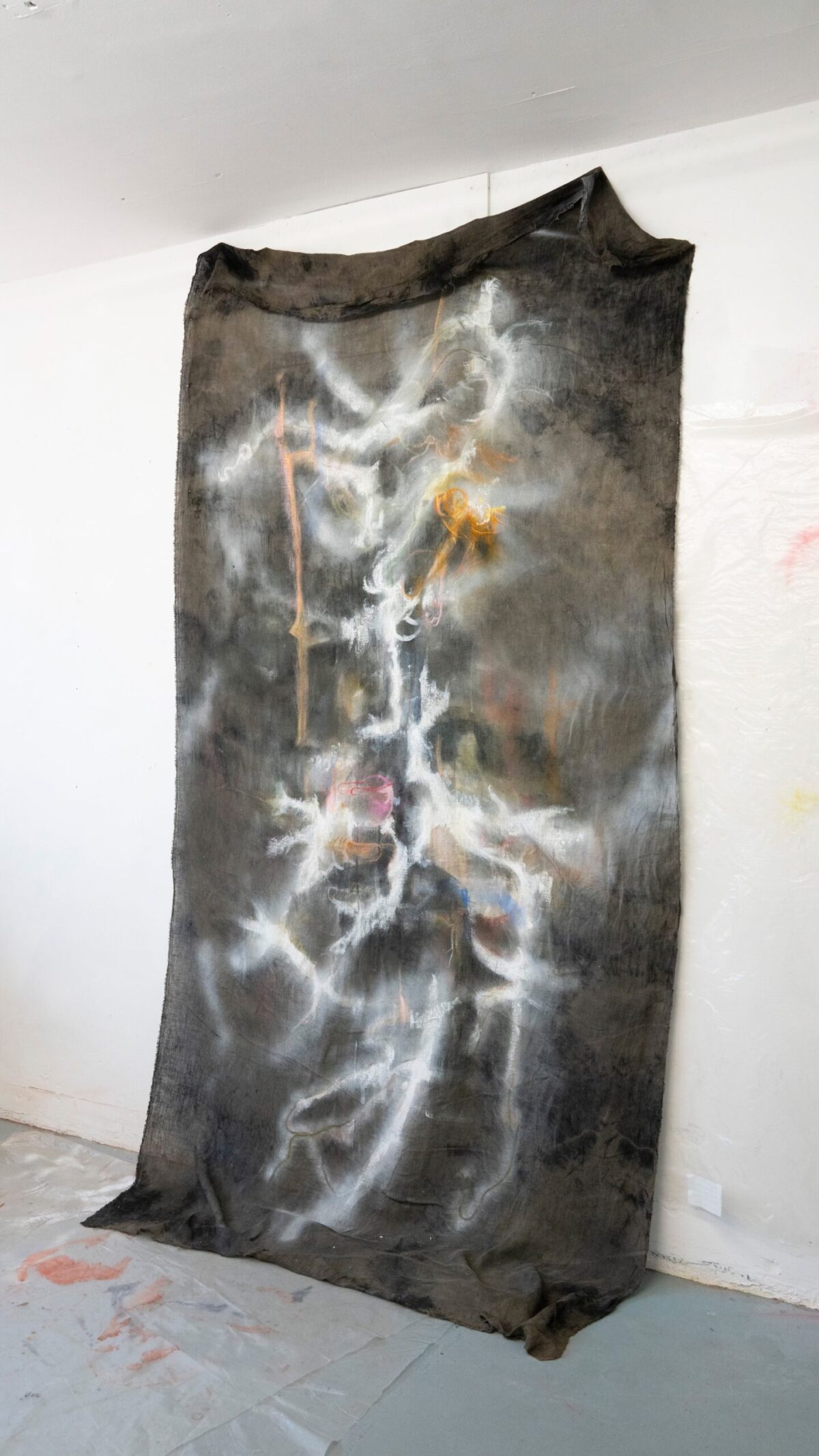
2021-2024
Linen dyed with roots, logwood chips, and iron solution. Oil pastel, crayons and paint.
300 x 100 cm.
What work or artist has most recently surprised you?
A few weeks ago, Per Kikerby’s painting show at Michaerl Werner Gallery, in Berlin. His works deeply amaze me. Maybe ‘surprise’ is not the exact word, but I was astonished by the feeling of not wanting to leave after an hour of wandering around. I could not have enough of it.
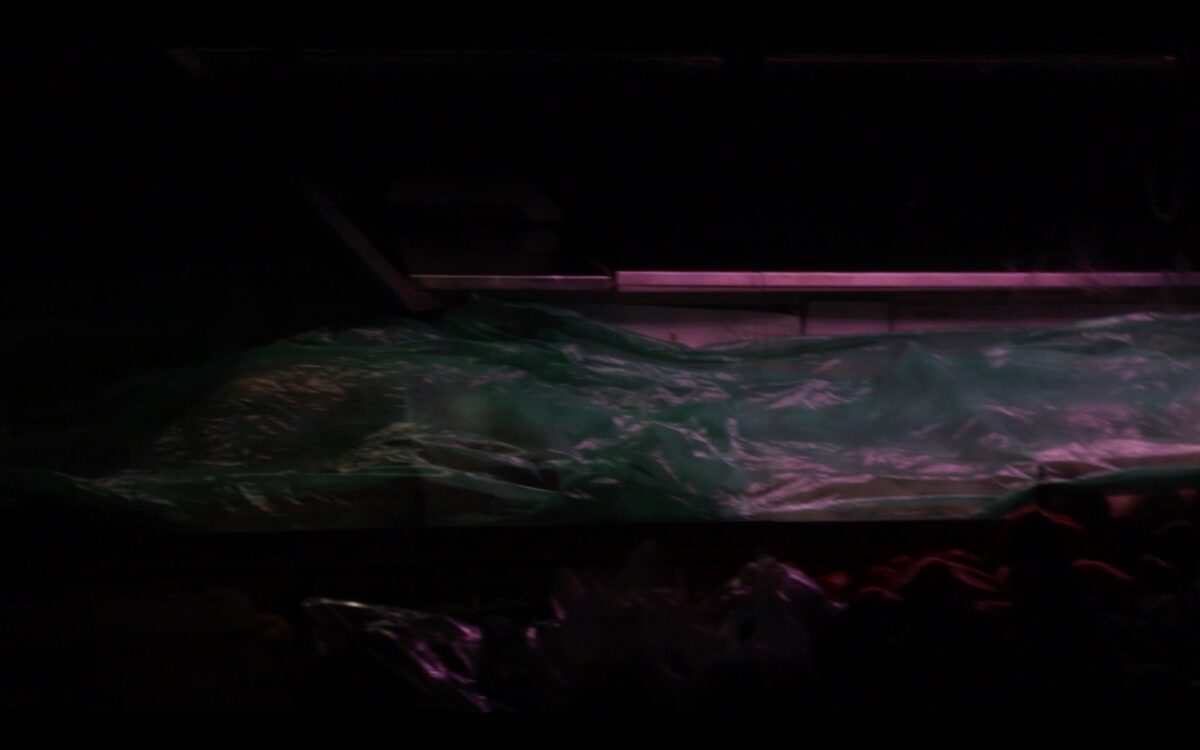
2019-20
Digital video, 8 ́ 57”
